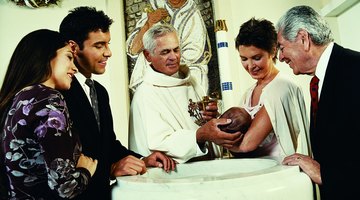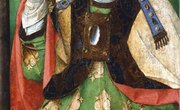If you have Christian godparents, then you're familiar with how important godparents are to families. The role of godparents has changed considerably in the history of Christianity.
What is a Godparent?
Originally, the role of godparent was performed by one person, known as the "baptism sponsor." In the early Roman Empire, the sponsor confirmed the integrity of an adult who wanted to be baptized and helped the person through the process. The role changed somewhat when Christianity was recognized in the Roman Empire, and it changed again when infant baptism was introduced in the Middle Ages.
Godparents can be godmothers or godfathers that watch over a godson or goddaughter.
Here is a small history lesson on the origin of godparents, showing how the role has evolved over time within the Christian religion.
History of Godparents:
Origin of Godparents in the Early Roman Empire
When Christianity was a new religion, in the early period of the Roman Empire, the role of godparent was much different than it is now. The role was called "sponsor," which is still the official term used in the Catholic Church and some other churches.
Since Christianity was a persecuted faith at this time, one important function of the sponsor was to:
- confirm the integrity and sincerity of the adult seeking to be baptized
- prevent infiltration of the community of believers by persecutors
Late Roman Empire: Baptism Sponsors
When the Roman Empire officially recognized Christianity, it was less important for the sponsor to vouch for the individual seeking baptism and christening. Another function remained important: leading the person through the process of preparation for baptism.
Because the individual seeking baptism was an adult and a pagan, or someone who grew up in a non-Christian culture, the preparation for baptism and christening was a complete course in Christian beliefs and practices. The baptism sponsors were the individual's main guide in learning about Christian life.
Early Middle Ages: Baptism & Christening
After the end of the Roman Empire, more and more people in Europe converted to Christianity. In the early Middle Ages, adult pagan baptism became rare. At the same time, infant baptism and christening became a dominant trend, as Christian parents wanted to have their young children baptized.
Also, the practice of having two sponsors -- one male and one female -- was born; this pair of baptism sponsors came to be known as godparents, which consisted of a godfather and a godmother.
Late Middle Ages: Christian Godparents
Prior to the Reformation -- when the new Protestant churches began to experiment with baptism -- the role and function of the godparents had stabilized and was specified in Church law. They were chosen by the parents of the infant to be baptized, and they spoke for the infant during the ceremony.
The Christian godparents were expected to help provide a Christian upbringing to the child, especially if the parents were absent or neglected their obligations.
Related Articles
References
Writer Bio
<!--StartFragment-->I am a current senior studying at the University of Missouri - Columbia with a major in Journalism and a minor in Sociology. I have interests in photojournalism, documentary journalism and design fields. <!--EndFragment--><!--EndFragment--><!--EndFragment-->











